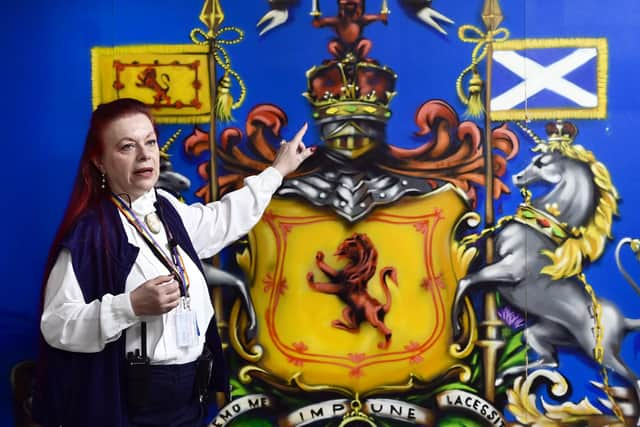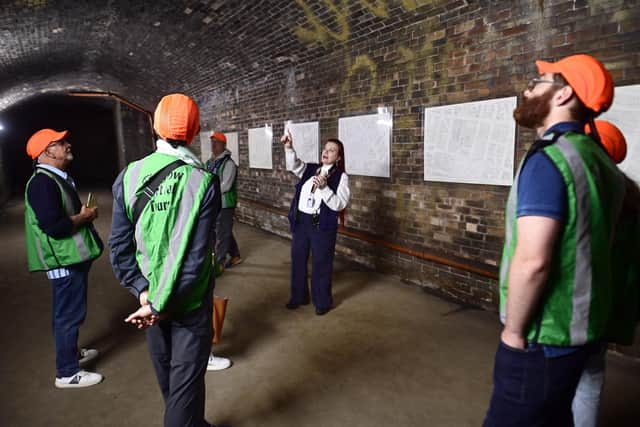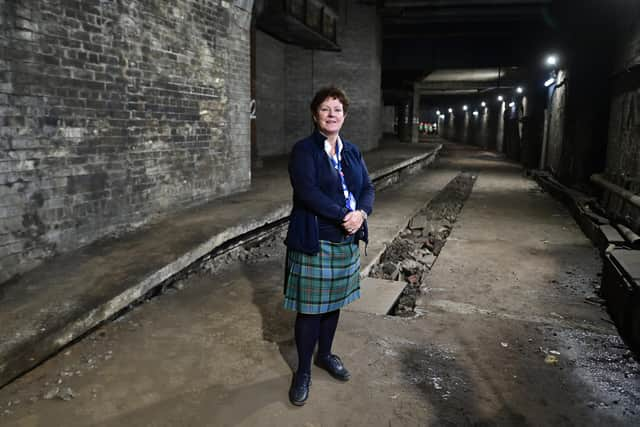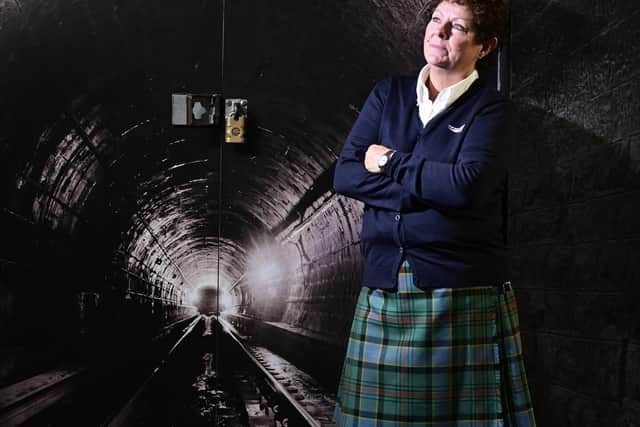Ex-Vatican guide recruited to provide Italian boost to acclaimed Glasgow Central Station tours
The huge success of behind the scenes tours at Scotland’s busiest station has prompted the recruitment of a former Vatican tour guide to provide an Italian language version for tourists and the many Scots-Italians north of the Border, The Scotsman has learned.The move comes as Glasgow Central is gearing up for track to be laid in an abandoned tunnel in the bowels of the station to enhance the highlight of the tours. It would pave the way for an historic steam locomotive to help recreate a Victorian-era station platform underground.
A third guide has been added for the acclaimed tours, which have attracted more than 100,000 people, to serve the Italian market. Flavia Burroni, from Rome, said “Glasgow was my dream” after she first visited Scotland seven years ago.
Advertisement
Hide AdAdvertisement
Hide AdShe joined Network Rail, which runs the station, after topping up her tourism qualifications post-Brexit at West College in the city. She said: “I fell in love with Scotland and said in my dreams I want to stay here. I was adopted by Glasgow.


"I love the people – they make Glasgow – along with the Victorian and Edwardian aspects of the city. Walking round it every day brings you a new surprise. Glasgow is the best of the best.”
Mrs Burroni’s tours, which include non-public areas below the main platforms, also feature the wartime experience of Italians in Scotland. While large numbers of Scots travelled from Glasgow Central to fight in the First World War, during the Second World War many Italian prisoners of war were sent in the opposite direction, such as to Orkney, where their legacy includes the ornate Italian Chapel.
Mrs Burroni said: “The tour is very good for both tourists and for people who live here who have Italian heritage, to know what this station means to Glasgow. The city today is in large part because of the station.”
Meanwhile, the long-planned development of the “Victorian platform” which was originally part of Central’s low level [underground] station appears to be finally proceeding after hold-ups due to mourning following the Queen Elizabeth’s death last year and long-running industrial action by Network Rail staff.


The last of some 70 tonnes of rubble and other rubbish has just been removed to clear the way for old rails and wooden sleepers to be fitted. They have come from the former Levenmouth line in Fife, which is being re-built.
Following the removal of the remaining debris by rail from around the platform, which lies adjacent to but hidden from the existing Argyle line station below Argyle Street, preparations are being made for the next stage of the project. The platform closed nearly 60 years ago, with the line being described as “sombre, sulphurous and Plutonian” by the author C Hamilton Ellis in its steam era in 1938.
Plans are being devised with Glasgow School of Art to return the platform to the Victorian era through the use of gas-effect lighting, steam and sound effects along with projections, and holograms of people in period dress.
Advertisement
Hide AdAdvertisement
Hide AdGlasgow Central Station tour guide and its museum curator Jackie Ogilvie said: “The material cleared has included masonry, pieces of concrete, bags of rubble and a huge amount of metal sheeting. It has been a dumping ground since 1964 – but only because we are trying to do something here it became an issue.


"We were teed up to have this emptied on the weekend the Queen passed but we went into mourning as a company and everything got shelved. That would have put us six months further ahead because we then needed to apply for new possessions [line closures] – we’re almost starting from scratch again.
"We also didn’t do anything while industrial action was going on because it wasn’t right, even though I really wanted this done.
"I’m now speaking to the guys about getting the track in. It’s come from Levenmouth, is currently sitting at Rutherglen, and is available for us whenever we are ready to take it. We need it transported to Exhibition Centre station because that’s the easiest place to bring it in. It will come by road, then by road-rail vehicle into the platform.


"That then opens the door for the pinnacle of what we are looking to achieve down here, which will hopefully be the bringing in of a steam locomotive.
"But there are logistical challenges to say the least in getting the locomotive into the station, though it is not about money. It would be transported by road to Exhibition Centre station, then by crane onto the track and be hauled along the rails to the Victorian platform.
"The problem might be getting the locomotive off the live line and onto this abandoned line, and at the moment I am in limbo as to where that sits. I’m not going to commit definitely because I’m not sure yet what’s going to happen.”
Advertisement
Hide AdAdvertisement
Hide AdHowever, the tour guide said she was optimistic things were on their way towards completion. She said: “I hope to retire in two years’ time and I want it done before I go. Hopefully, this will be my legacy, along with the museum, to Glasgow Central Station."
The Museum of Scottish Railways in Bo’ness has agreed to lease its Kelton Fell locomotive for the project. The Glasgow-built engine was constructed in 1876 at the Hyde Park Works in Springburn by Neilson & Co for Lanarkshire firm William Baird & Co for a railway at its iron mines in Cumberland. It later worked at various Lanarkshire coal mines until 1968.
Historic carriages due to be placed next to the locomotive have still to be sourced.
Comments
Want to join the conversation? Please or to comment on this article.